Sorted by date Results 1 - 25 of 37
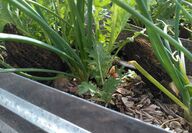
Enthusiasm about black garlic made me a garlic nerd. This wonderful and versatile condiment is made by fermenting whole-bulb garlic at 180 degrees Fahrenheit for two weeks, during which time it becomes something like a sweet balsamic vinegar taffy. It goes great with cheese and makes fine sauces and spreads. I wanted to experiment with garlic of all types from all over the world. This desire led me to Garlicana, a boutique garlic farm in southwest Oregon that practices soil conservation and...
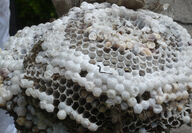
I've had a banner year of pollinators. The mason bee nest is full and I'm seeing such a variety of wasps, bees and flies that I've stopped worrying about stings when I'm working in the garden. Of bees, only honeybees and bumblebees sting. Many have said it's hard to keep bees on Harstine Island, and bumbles are very reticent about stinging. Early this summer, a friend disturbed a ground nest of bumblebees while using a machine to dig up bamboo, and for all that, one of his three-man crew was...
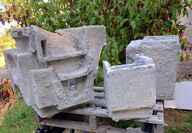
I've been known to accumulate free materials towards an indistinct future use. Some call that "hoarding." At one point it was scraps of Kevlar. At another, 55 gallon drums. More recently, it was styrofoam packing forms. Expanded polystyrene (styrofoam) is easily recycled by densifiers, which reduce it to 1/90th of its aerated volume and extrude it into ingots. Even if we have such facilities in Mason County, I'm not inclined to bundle up trailerloads of foam and deliver them, or burn it. I have...
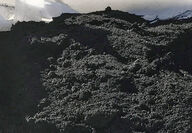
There's biochar! I've written about biochar in these pages before. Techniques and understandings evolve, and there's always more to share a little way down the road. Years of pit burns and my neighbor Kathy's wood stove have supplied me with adequate charcoal to this point. As I expand my composting operations and refine compositions, I return to biochar as an important amendment - particularly in South Sound, where we are spoiled for biomass. Any organic material can be made into biochar,...
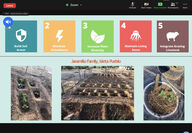
I've never used Zoom intensively, so when I attended Tuesday's "Keeping the Culture in AgriCulture: First Annual Food Sovereignty Symposium" hosted by Tahoma Peak Solutions, I was trepidatious about the screen experience as much as I was excited about the program. As a recovering desk jockey, I can be very irritated by unprofessional or clunky UIs ("user experiences.") Nothing of the sort took place over the four hours of webinar that I enjoyed. Even presenters who claimed not to enjoy...
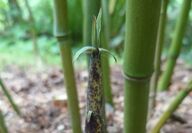
Many have been fooled about the uses of bamboo. Its applications are nowhere near as limited as industry would have us believe. Sure, it can produce all kinds of consumer products once requiring wood or plastic. It also makes a fabric that's functionally indistinguishable from polyester (oh goody!), which in most cases is no better for the environment than synthetics. That was clear to me after watching Michelangelo Antonioni's "Sette canne, un vestito (Seven reeds, one suit)" (1949), which...
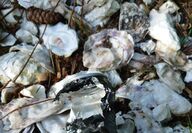
Readers of this column from February of last year may recall my trials of beer traps combined with Sluggo to thin slug populations. Favorite tipples were chosen, innumerable slugs died, and their population hasn't fully recovered in 2022. Three species of garter snakes (Thamnophis spp.) and the narrow-collared snail-eating beetle (Scaphinotus angusticollis) have proliferated as well. I have created habitats for them after reading about their needs. I have seen these predators eating slugs, and...
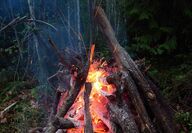
I thought "On fire" would be a better title for this week, but it's vague and misleading. Misleading assumes I'm trying to go somewhere. I've been meandering through the gardens doing maintenance as I tend the season's fires. Last year the burn ban caught some of us by surprise. I was stuck with several piles of 20-year tree stumps, perfect labyrinths of dirt and roots in which rodents hide. Though I chip thinned trees for mulch every spring, last year's stump backlog (pun intended) kept me...
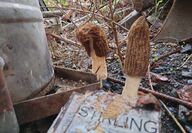
There were a lot of reasons to loathe 2020. Round here, a huge flush of morels wasn't one of them. Kale volunteers were popping up in the spring garlic beds. The garlic had been planted in fall in Creation Organics' 60 rotted manure/30 peat/10 sand mixture. The whole had been covered with rotted alder chips and cardboard. I was weeding the kale out of the beds when I noticed a morel growing with the garlic. Suddenly I realized there were several. An hour later it was clear that five raised beds...
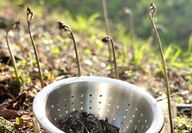
Over a recent lunch of shrimp curry, kicharee and pasta with nettle pesto, our friend asked whether we had eaten fiddleheads before. I said sure, in the northeast, but not in Washington. Unsurprisingly, these are two different ferns. In the interest of nipping confusion in the bud, I once again must resort to scientific names: the fern I knew from Massachusetts is the ostrich fern, Matteuccia struthiopteris, and the fern to which our friend was referring is the bracken fern, Pteridium...
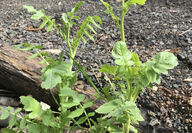
Clay soil is commonplace in Mason County. I've got various mixtures from almost soil to practically pottery. People put a lot of effort into fluffing up that clay soil for planting purposes. Introducing air and organic matter can lighten some of that impermeability and compaction. Tilling clay contributes to hardpan formation, and manually busting it up is a daunting prospect. I've bent a homemade broadfork almost beyond operability on Harstine Island clays. Working the clay on a broadacre...
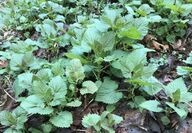
Nettles are a welcome sign of spring in my gardens and woods. Do those who curse their sting know all the wondrous uses of this vegetal gift? I don't profess to know all they offer - as with most topics I am continually learning. I have been eating nettles for years (they make a great pesto) and prefer them to most greens for their taste and nutrition, and only in reading for this column did I find that yarn is made from certain nettle species' fibers. That's not surprising, considering the...
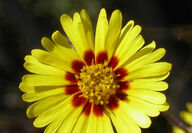
The "Savannah hypothesis" holds that human evolution started in the woods but moved to meadows and grasslands. It's been used to explain everything from our stress levels to humans' love affair with the lawn. Permaculture values the diverse edges of habitats: where grassland meets forest, for example. In that interzone, flora and fauna from both mingle, enjoying the dynamics of changing exposure to wind, sun and rain. We may not think of our forested biome as home to meadowlands, but Port...
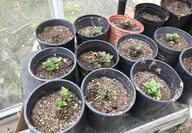
Last year I wrote about my springtime seed choices with a little trepidation. I was concerned one of the smaller catalogs might receive enough exposure to sell out faster. This year I'm happy to put Experimental Farm Network - experimentalfarmnetwork.org - front and center. I'm pleased for them, but not the prospects of future seed availability: my news feed delivered a writeup including them from The New York Times. Next year I'll have to order even earlier. EFN's catalog was my largest seed...
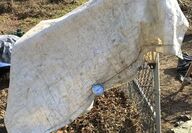
The title of this column doesn't refer to spring. That's still a month off, and this week's night freezes remind us that winter didn't drop its whole payload in December. I'm talking about compost becoming hotter and more active. That's been happening to an unprecedented degree - only to lose its momentum at a critical time. It was thrilling when Pile A, the construction of which I documented in the Journal's Real Estate Guide published last week, reached 160 degrees. But the directions I had gi...
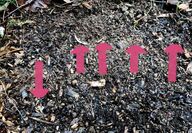
The real estate saw that a property's value is in three things: "location, location, location" applies even more to woodland perennials. Perennials won't perennialize if they aren't in the right conditions. Sometimes these circumstances involve intangibles that prevent establishment. Intangible blockades are fewer if you're planting native perennials, which take advantage of existing relationships with regional insects, fungi and pollinators. A settled native perennial can signpost the...

This week, as I raked two hogsheads of dead leaves into pens for composting and producing leaf mold, it was nice to discover that a mainstream agronomist recommended this wintertime activity over a century ago. George Washington Carver was a lot more than the "peanut man" to which he's been boiled down. Sure, he found over 300 uses for peanuts. In 1921, he testified before Congress so capably that, initially granted 10 minutes, he was given "unlimited time" to expound a the properties of and...
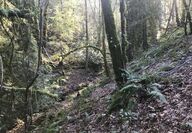
Science has a way of validating the obvious. Consider how often psychologists are quoted in the news to prove something everyone knows. In the case of "shinrin-yoku," translated as "forest bathing," it has been established that people can "restore balance and health by immersing themselves in a forest environment and absorbing its atmosphere." Japan's Ministry of Agriculture, Forestry and Fisheries coined the term years ago, and quite a bit of research has been done on the phenomenon. Before...
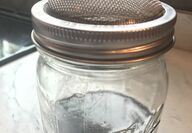
No matter the season, something always landed in my wine. In summer it was fruit flies and in winter it was fungus gnats. That took a little while to figure out. Plants overwintering in the breakfast nook would, by December, be home to generations of scrawny flying insects. These were not apparent on the soil but only in the air, your face or your adult beverage. Especially attracted to fungal odors such as those of beer or wine yeast, fungus gnats constitute six of the seven families...
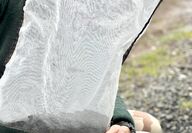
Last year, I wrote in these pages about making compost tea. This water extraction of compost, combined with foods to fuel the procreation of its beneficial organisms, is but one way to make the most of your microbiologically complete compost; it's the bacchanalia of compost infusions. Tea season is spring and summer. By then, I will have refined my process greatly and plan to share the photos of my new invisible (to the naked eye) friends. For now, I could make a batch of 21-24 day compost, if...
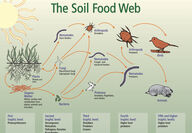
This week, I started writing a column on massaging a water extract out of compost. Halfway through, I realized you might wonder why I'd bother with all that. It's been an odyssey for me to realize that compost is multifariously alive. As such, I may never have experienced it fully. I've made compost that did the job for years, but I didn't know why or aspire to better. The complexity of interactions that comprise a good compost can't be knocked together at a dumpsite. It has to be cultivated...
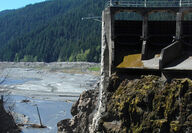
It's a good time of year for documentaries, if your electricity and internet can handle pounding rain and deep-freeze snowfalls. Stuck on unplowed Harstine Island with plenty of hearty soups and greens, I searched for free, online docs to spice my studies. The pun that titles 2019's "Artifishal" might be the only liberty the film takes. In the urgent question of salmon and trout habitat restoration, it's clear from the name which side the directors are on - but I appreciate the acknowledgment...

Reusing waste materials is easier with a basic understanding of their composition. Readers of this column will recall my experiments in upcycling oyster shells into decorative, traction-enhancing calcium supplements and cardboard into weed suppressant that breaks down into carbon-rich soil enrichment. According to the soil science course I've been taking, we needn't concern ourselves with supplementing calcium in the soil. Inorganic supplementation (here, gypsum or lime) will only provide a temp...
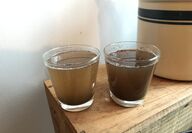
If you'd told me years ago that homemade compost can be ready to use in 21-24 days no matter the weather, I might have gone the extra mile to formulate it properly. Had I known it continues to be optimally bioactive for another six months, I would have distributed it as quickly as I made it, rather than letting it sit until it becomes glorified topsoil. I tend to save things that are difficult or time-consuming to make or obtain. Hitherto, my compost took so long to mature that it was too...
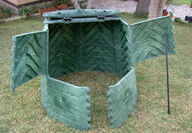
Composting is one of the mysteries that my soil science course is revealing. I've been making good enough compost for years without a bum batch. Still, my objective has been to eliminate kitchen scraps - and reduce garbage - as much as it's been to enrich the soil. That spirit of waste disposal, as opposed to soil enrichment, has degraded the compost industry. The compost produced by shredded woody material carelessly mixed with various biodegradable materials might visually resemble proper...